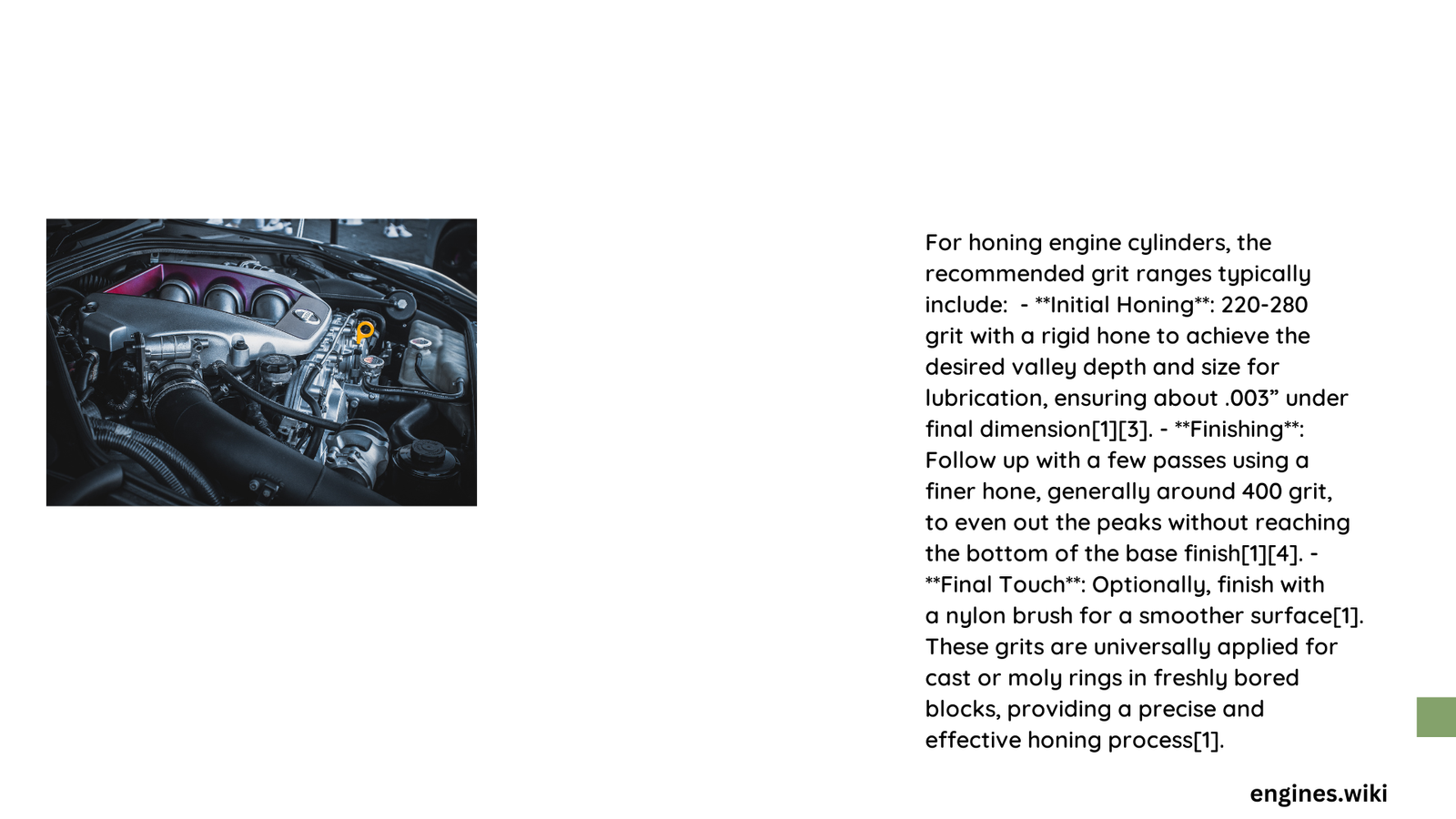Honing engine cylinders is a critical precision process that demands careful selection of abrasive grit sizes to achieve optimal surface finish and engine performance. The right grit determines the cylinder wall’s texture, ensuring proper piston ring sealing, oil retention, and minimizing wear. Mechanics and engine builders must navigate through multiple grit stages, from aggressive material removal to fine polishing, each step carefully calculated to create the perfect cylinder bore surface.
Why Does Grit Matter in Cylinder Honing?
Grit selection is not just a technical detail—it’s the difference between a mediocre and a high-performance engine. The surface texture created by honing directly impacts:
- Piston ring sealing efficiency
- Oil retention capabilities
- Friction reduction
- Overall engine longevity
What Are the Primary Honing Grit Stages?
| Grit Range | Purpose | Typical Application |
|---|---|---|
| 220-280 | Rough Honing | Initial material removal after boring |
| 320-400 | Fine Honing | Surface refinement and crosshatch creation |
| 500-550 | Final Polishing | Achieving smooth surface finish |
How to Select the Correct Honing Grit?

Selecting the right honing grit involves multiple considerations:
- Engine Block Material
- Cast Iron: More tolerant to aggressive honing
- Aluminum: Requires gentler approach
-
Plated Cylinders: Specialized grit selection needed
-
Desired Surface Roughness
- Rougher surfaces (220 grit): Better oil retention
-
Smoother surfaces (500+ grit): Reduced friction
-
Machining Precision Requirements
- Measure cylinder bore dimensions
- Calculate piston clearance
- Ensure out-of-roundness within 0.001″-0.002″
What Technical Factors Influence Grit Selection?
Cylinder Wall Characteristics
- Roughness (Ra) Value:
- 220 grit: Approximately 1.5-2.0 micrometers
-
500 grit: Around 0.4-0.6 micrometers
-
Crosshatch Angle:
- Typically 45-60 degrees
- Critical for proper oil retention and ring sealing
Practical Honing Recommendations
- Start with coarser grit (220-280) for initial material removal
- Progress to medium grit (320-400) for surface refinement
- Finish with fine grit (500-550) for final polishing
- Use consistent pressure and rotation during honing
What Equipment Ensures Precise Honing?
Recommended Honing Tools
- Flexible cylinder hones
- Diamond-impregnated stones
- Rigid honing machines
- Computerized bore measuring systems
Pro Tips for Successful Cylinder Honing
- Always clean and inspect cylinders before honing
- Use appropriate coolant/lubricant
- Maintain consistent honing speed
- Verify final dimensions with precision measuring tools
Common Mistakes to Avoid
- Over-honing leading to excessive material removal
- Inconsistent grit progression
- Neglecting cylinder wall straightness
- Using inappropriate abrasive materials
Technical Precision Checklist
- ✓ Verify cylinder bore dimensions
- ✓ Check piston clearance
- ✓ Measure surface roughness
- ✓ Confirm crosshatch pattern
Advanced Considerations
For high-performance or racing engines, consider:
– Specialized diamond honing techniques
– Micro-polishing processes
– Advanced surface treatment technologies
Final Thoughts on Cylinder Honing
Mastering cylinder honing requires understanding the intricate relationship between grit selection, surface finish, and engine performance. Each grit stage plays a crucial role in preparing the cylinder walls for optimal functionality.
Reference:
– Flex-Hone Resource Guide
– Dan’s Motorcycle “Honing Your Cylinder”
– Engine Cylinder Bore Honing – AA1Car
